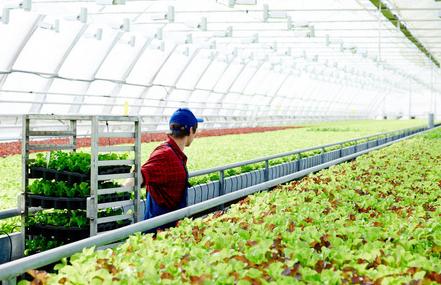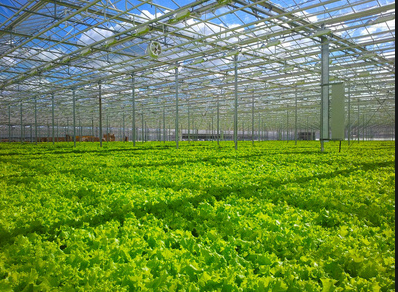Food insecurity affects over 700 million people worldwide. From droughts to floods to disrupted supply chains, modern agriculture is struggling to keep up with global demand. With the climate changing and arable land shrinking, a critical question emerges:
Can greenhouse farming help secure our food future?
As search trends for "climate-resilient agriculture," "indoor food production," and "year-round farming" rise, greenhouse farming is gaining global attention. But is it a true solution—or just a niche technology?
What Is Food Security—and Why Are We Losing It?
Food security means that all people, at all times, have physical and economic access to enough safe and nutritious food. But achieving this has never been more difficult.
Today’s threats include:
Climate change disrupting growing seasons
Soil degradation from over-farming
Water scarcity in key agricultural regions
War, trade conflicts, and broken supply chains
Rapid urbanization shrinking farmland
Population growth outpacing food systems
Traditional agriculture can’t fight these battles alone. A new way of farming—one that’s protected, precise, and predictable—might just be the support it needs.
What Makes Greenhouse Farming a Game-Changer?
Greenhouse farming is a type of controlled environment agriculture (CEA). It allows crops to grow inside structures that block out extreme weather and regulate temperature, humidity, light, and airflow.
Key advantages that support food security:
✅ Year-Round Production
Greenhouses operate regardless of season. In winter, crops like tomatoes or spinach can still grow with heaters and lighting. This helps keep supply consistent, even when outdoor farms shut down.
✅ Climate Resilience
Flooding, heatwaves, and late frosts can ruin outdoor crops. Greenhouses protect plants from these shocks, giving farmers a more reliable harvest.
A greenhouse farm in Spain was able to continue producing lettuce during a record-breaking heatwave, while nearby open fields lost over 60% of their yield.
✅ Higher Yield Per Square Meter
Greenhouses produce more crops in less space. With vertical growing or hydroponics, yields can increase by 5–10 times compared to traditional farming.
Urban areas can even produce food locally, on rooftops or small plots, reducing pressure on distant rural land.
So, What Are the Limits?
Greenhouse farming offers big benefits—but it’s not a silver bullet.
High Energy Use
To maintain optimal growing conditions, greenhouses often rely on artificial light, heating, and cooling. Without renewable energy, carbon emissions can rise.
High Start-Up Costs
Glass structures, climate systems, and automation require capital investment. In developing countries, this can be a barrier without government or NGO support.
Limited Crop Variety
While great for leafy greens, tomatoes, and herbs, greenhouse farming is less suitable for staple crops like rice, wheat, or corn—key components of global nutrition.
A greenhouse can feed a city fresh lettuce—but not its main calories and grains. That still depends on outdoor or open-field agriculture.
✅ Reduced Water and Chemical Use
Hydroponic greenhouse systems use up to 90% less water than traditional farming. With enclosed environments, pest control becomes easier—reducing pesticide use.
In the Middle East, greenhouse farms using closed-loop systems grow fresh greens using brackish or recycled water—something outdoor farms can’t do.
✅ Local Production = Safer Supply Chains
In times of war or pandemics, imported food becomes unreliable. Local greenhouse farms shorten supply chains and reduce dependence on foreign imports.
A supermarket chain in Canada built greenhouse partnerships to grow strawberries year-round locally—ending its reliance on long-distance imports from California or Mexico.

So, How Can Greenhouses Support Food Security?
Greenhouse farming works best as part of a hybrid system, not a total replacement.
It can complement traditional agriculture, filling in gaps during bad weather, off-seasons, or transport delays. It can focus on high-value crops and urban supply chains, freeing outdoor land for staples. And it can act as a buffer during crises—natural disasters, war, or pandemics—keeping fresh food flowing when other systems break.
Projects like 成飞温室 (Chengfei Greenhouse) are already designing modular, climate-smart greenhouses for both cities and rural communities—bringing controlled farming closer to the people who need it most.

What Needs to Happen Next?
To truly boost food security, greenhouse farming must be:
More affordable: Open-source designs and community co-ops can help spread access.
Powered by green energy: Solar-powered greenhouses reduce emissions and cost.
Policy-supported: Governments need to include CEA in food resilience plans.
Combined with education: Farmers and youth must be trained in smart growing techniques.
A Tool, Not a Magic Wand
Greenhouse farming won’t replace rice fields or wheat plains. But it can strengthen food systems by making fresh, local, and climate-resilient food possible—anywhere.
In a world where growing food is getting harder, greenhouses offer a space where conditions are always right.
Not a full solution—but a powerful step in the right direction.
Welcome to have a further discussion with us.
Email:Lark@cfgreenhouse.com
Phone:+86 19130604657
Post time: May-31-2025







 Click to Chat
Click to Chat